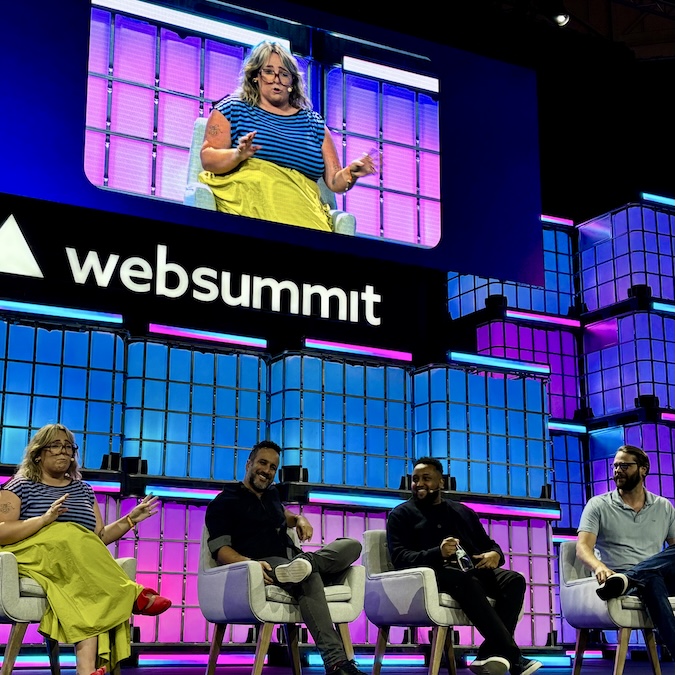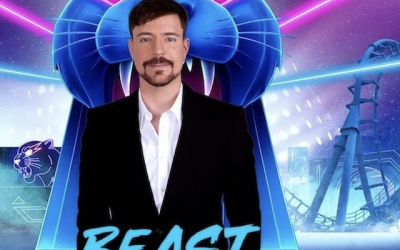At Web Summit 2025 in Lisbon, four leading figures in digital media took the stage to discuss what the “next wave” really looks like for audiences, creators and legacy outlets. Moderated by former Washington Post TikTok producer Dave Jorgenson, the session brought together Lucy Blakiston, founder of Shit You Should Care About; Ramin Beheshti, co-founder and CEO of Caliber; and Ahmed Faid, founder and CEO of Dose of Society. Between them, they represent a new generation of media entrepreneurs rewriting how journalism, storytelling and community intersect on social platforms.
Jorgenson opened the discussion by asking each speaker to explain how their media brands began. For Blakiston, it started with frustration. As a 21-year-old university student in New Zealand studying media and international relations, she felt disconnected from the world she was supposed to be learning about. “I didn’t understand what was happening,” she said. “So, as any 21-year-old does, I thought I should be the one to change the news.” What began as a side project on Instagram has since become one of Substack’s most successful youth-focused newsletters, blending global commentary with a candid, conversational tone.
Beheshti, who previously served as CTO of The Wall Street Journal, described his own move from legacy media to digital-first publishing. After recognising that “no young people were coming to consume Wall Street Journal content,” he co-founded Caliber and The News Movement, both designed to deliver credible news directly on social platforms. “When we started, everyone said you can’t do journalism on TikTok,” he recalled. “We’ve proven you can. We now reach around a hundred million people a month, most of them under 35.”
Faid’s story echoed that same entrepreneurial leap. His company, Dose of Society, started on the streets of London, inspired by Humans of New York. “I picked up a camera one summer and started talking to people about their lives,” he said. With early support from Snapchat, the project grew into a global social-first brand built around authentic, short-form human stories. “We’re a platform that gives people a place to share their stories,” Faid said. “Our aim is always to spark emotion and connection.”
That idea — human storytelling as the foundation of new media — ran through the entire discussion. Asked whether they saw legacy media as competitors, all three panellists said no. Beheshti noted that traditional outlets are finally “starting to talk about creators,” but the real competition, he argued, isn’t between news brands. “We’re all competing for attention,” he said. “Our challenge is getting someone to stop scrolling and engage with something that might be complex or even sad.”
Blakiston was more blunt about what she sees as legacy media’s problem. “I wouldn’t exist without them,” she admitted. “But they spend so much time resisting new technology that they waste years.” Her advice to traditional newsrooms was simple: “Hire young people. Give them a mic, give them a camera, and let them be personalities.”
The conversation turned to one of the most common criticisms levelled at social-first news: that it oversimplifies complex issues. None of the panellists agreed. “People don’t always need a 2,000-word article,” Beheshti said. “Sometimes they just need enough information to get on with their day.” He described short-form news as an “entry point” that encourages audiences to explore topics more deeply elsewhere. Faid agreed, pointing out that viewers often track down interview subjects on their own to learn more. “If they want to know more, they’ll find it,” he said. “TikTok’s search power makes that easy.”
When the topic turned to attention spans, Blakiston pushed back against the stereotype that Gen Z is easily distracted. “They’re listening to three-hour podcasts,” she said. “They’re just consuming differently. We should give them credit for being smart.” Her platform’s continued success as a newsletter — with more than 400,000 daily readers — is proof that younger audiences are still willing to read if they feel respected. “Algorithms don’t touch inboxes,” she said. “That’s why I love newsletters. It’s a space you own.”
No discussion about modern media escapes the gravitational pull of AI, and this one was no exception. All three founders said they were experimenting cautiously. Faid described AI as a “powerful back-end tool” for editing and workflow but stressed that Dose of Society would always remain “human-first.” Beheshti agreed that the technology was moving too fast for any company to have “figured it out,” while Blakiston rejected the idea that automation could ever replace genuine voice or connection. “I don’t want to automate myself,” she said. “Maybe being a person will become my unique advantage.”
As the session drew to a close, the panellists looked ahead. Beheshti previewed Caliber’s new app, designed to aggregate trusted news creators in one space and help them monetise their content — “news on your terms, from people you trust.” Faid spoke about brand-building in the era of saturation, describing Dose of Society’s signature microphone logo as a symbol of authenticity amid a flood of imitators. And Blakiston left the audience with what may have been the quote of the session: “Don’t kill the part of you that is cringe. Kill the part that cringes.”
If The Next Wave of Media made one thing clear, it’s that the future belongs not to those with the biggest newsroom or the slickest tech stack, but to those who understand how to tell human stories — and how to build trust, one post, one reader, and one conversation at a time.





